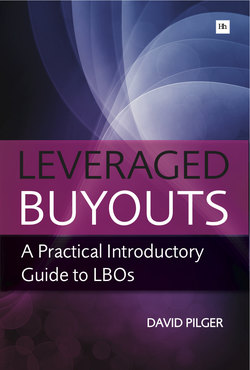Читать книгу Leveraged Buyouts - David Pilger - Страница 13
На сайте Литреса книга снята с продажи.
Outcomes
ОглавлениеGiven what we now know about the advantages and risk associated with leveraged buyouts, let’s take a look at a simple example on how a transaction can potentially unfold, for better and then for worse.
In our example we have an investor that has identified a target company for a leveraged takeover. The target company produces essential engine parts for trains and has been doing so, profitably, for nearly 90 years. The target company has very little debt on its balance sheet and strong, steady cash flows. The company has been family owned since its inception and the family is looking to sell 100% of the company.
After conducting his due diligence and analysis the investor calculates a value range for the target company. The analysis, which we will cover in detail later, includes: 1) the market pricing for similar companies as a multiple of EBITDA (Earnings Before Interest Depreciation and Amortization), 2) purchase pricing in previous acquisitions of similar companies, as well as, 3) a discounted cash flow analysis – which also relies on multiples of earnings to derive the implied enterprise value of the company.
The investor carefully analyzes the impact of the target company taking on additional debt and its ability meet the interest payments over a decided time period. From this analysis the investor gains a measure of comfort in the target company’s ability to continue to generate earnings, service the debt, and eventually provide a satisfactory return on investment.
Based on his analysis and research, the investor decides to put forth an offer to the current owners of the company. The bid is accepted and the purchase transaction closes successfully at a price of $100 million.
